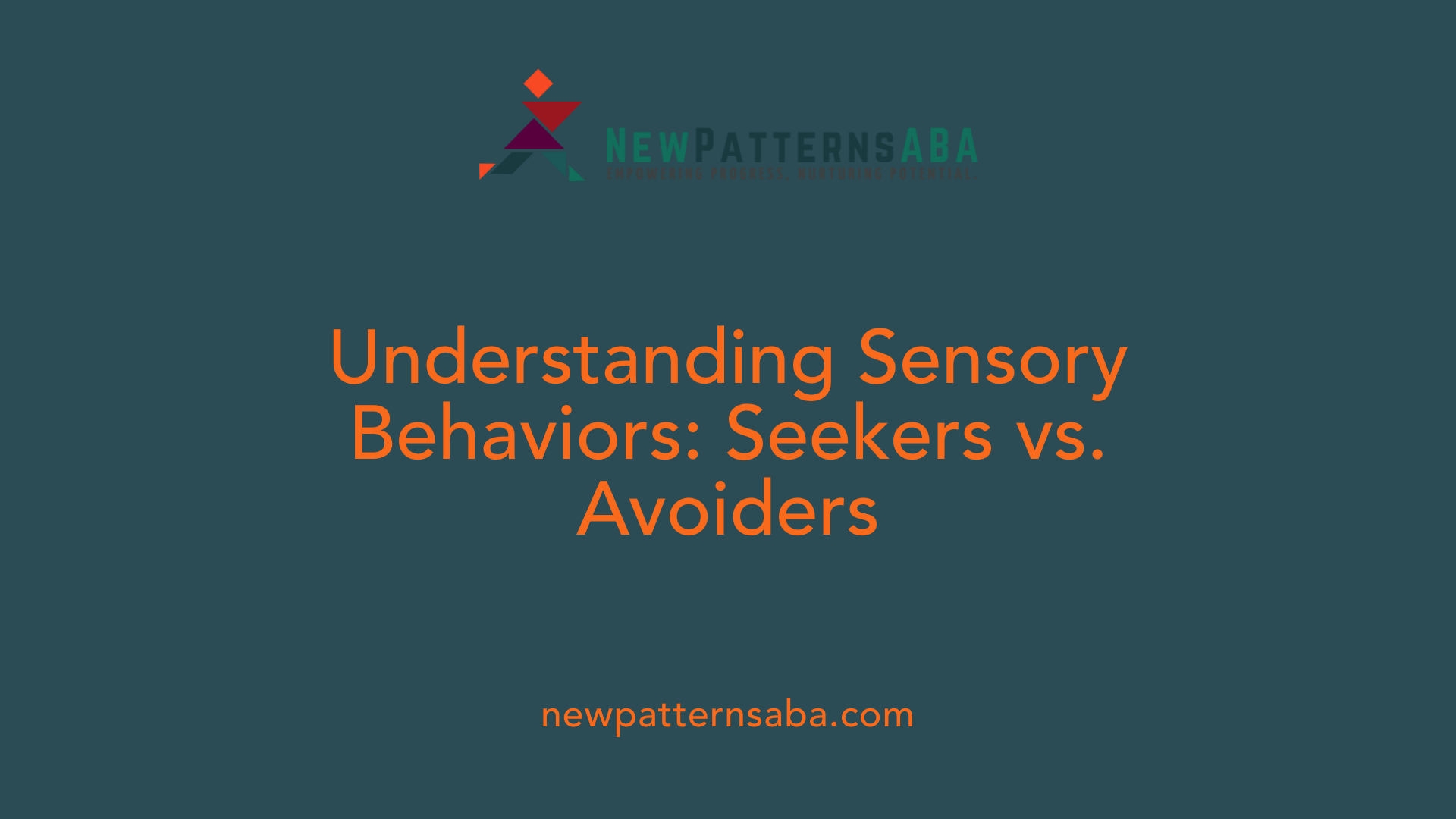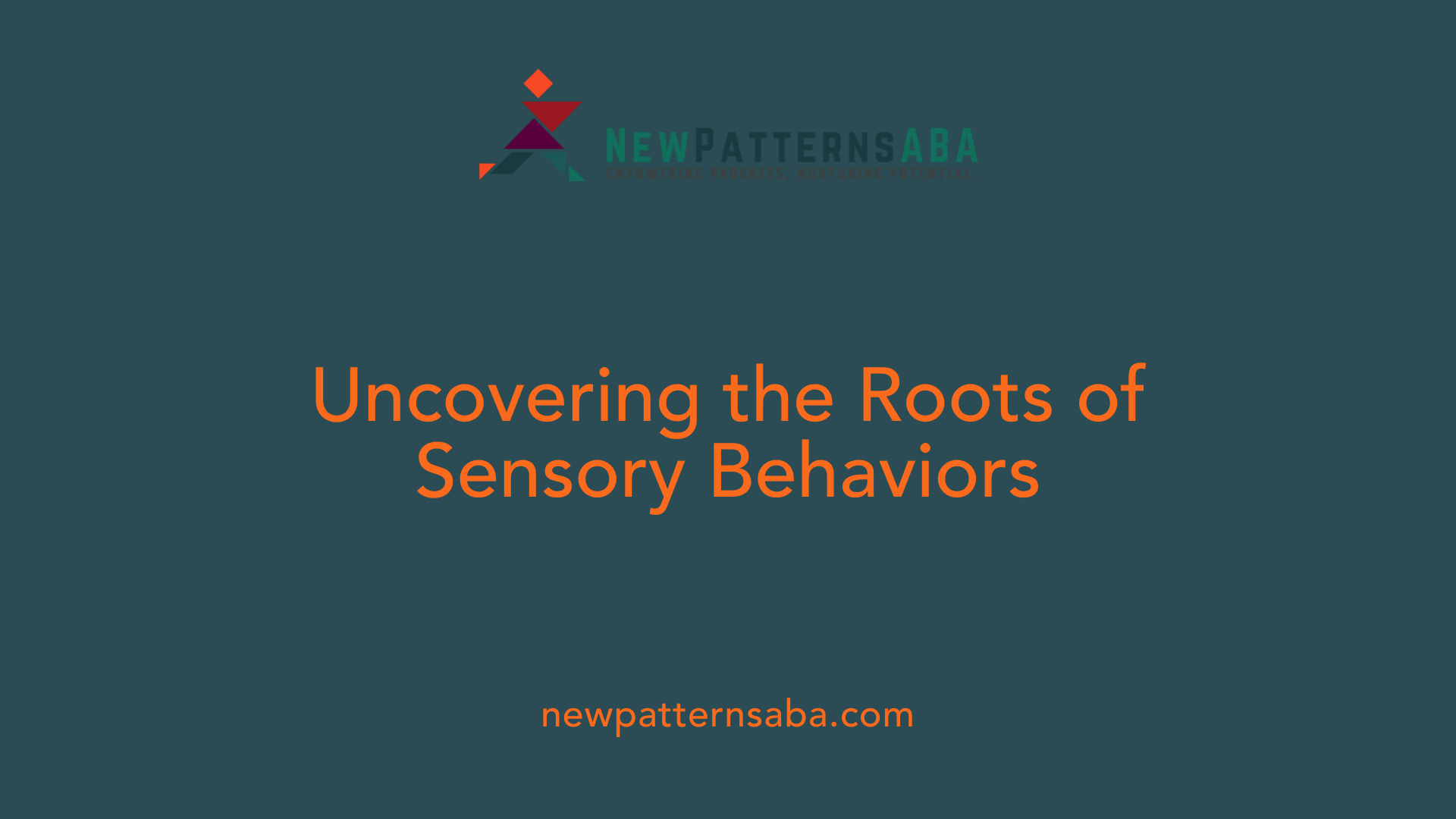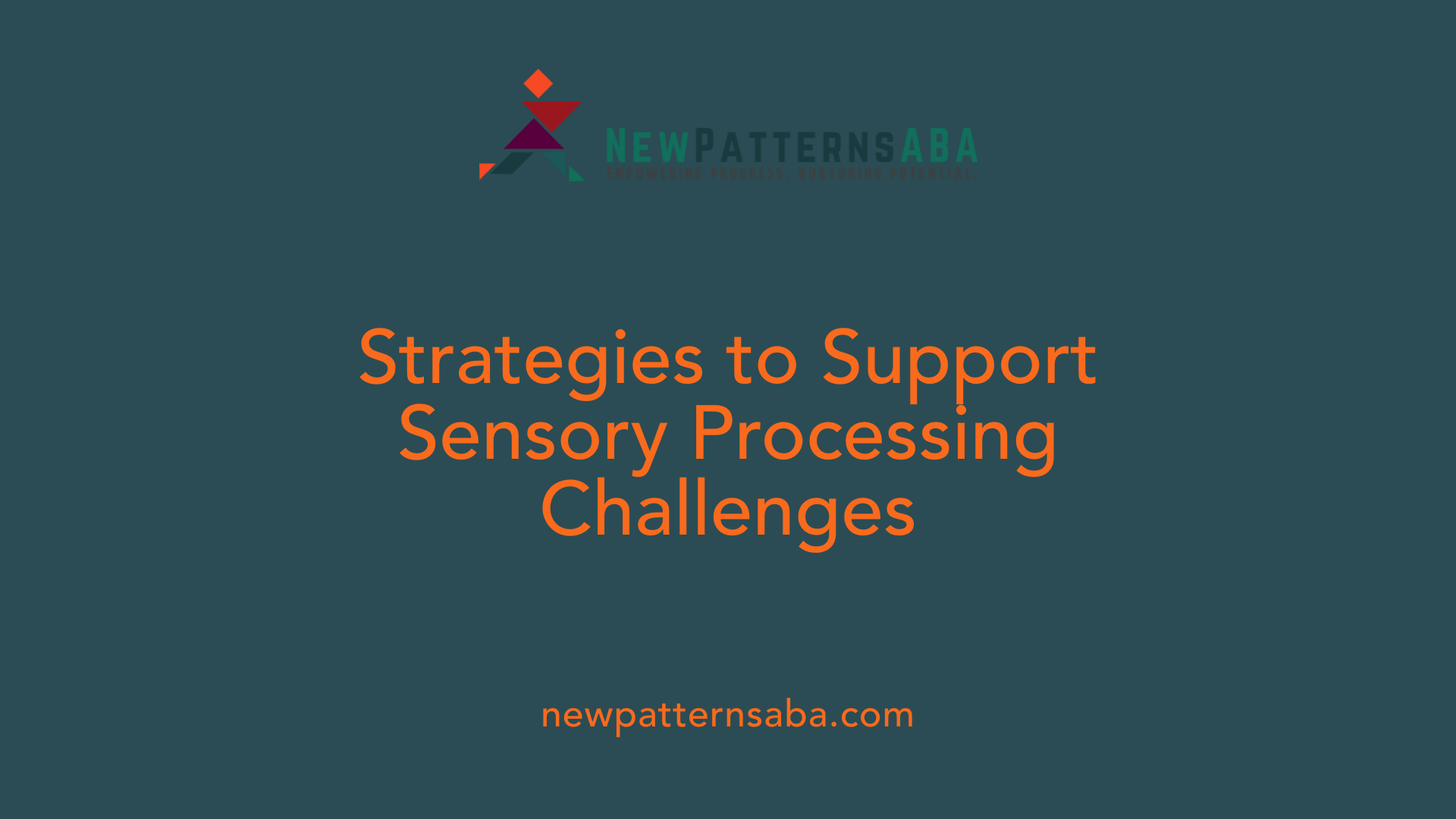Understanding Sensory Processing Differences
Children with sensory processing issues display a range of behaviors that can be challenging for caregivers to interpret. Recognizing whether a child is seeking sensory input or avoiding certain stimuli is essential in providing appropriate support and interventions. This article explores the key differences, behaviors, causes, and management strategies related to sensory seeking and sensory avoiding behaviors in children.
Distinguishing Sensory Seeking and Avoiding Behaviors

What are the differences between sensory seeking and sensory avoiding behaviors in children?
Children with sensory processing differences often display behaviors that fall into two categories: seeking or avoiding sensory input. Understanding these behaviors is vital for providing appropriate support.
Sensory seeking children actively look for additional sensory stimulation. They might enjoy activities like jumping, spinning, or touching different objects repeatedly. These children tend to have higher thresholds for sensory input, meaning they need more stimulation to feel calm and engaged. They often engage in high-energy activities such as running or roughhousing, and they have a high tolerance for pain and loud noises. Their behaviors help them meet their need for sensory input but can sometimes lead to safety issues or social challenges.
On the other hand, sensory avoiding children are highly sensitive to sensory stimuli. They experience sensations like bright lights, loud sounds, or certain textures as overwhelming or distressing. To manage these feelings, they actively try to reduce or escape from the stimuli. For example, they might cover their ears, avoid touch or certain textures, or seek quiet, calm environments. Their heightened sensitivities stem from a hyper-responsive system where even common stimuli are perceived as intense or painful.
While many children primarily show one type of behavior, some display a combination depending on context or their current state. For instance, a child might seek movement when bored but avoid noisy environments when overstimulated.
How do children respond to sensory input?
Kids with sensory sensitivities exhibit distinct reactions to their environment. Sensory seeking children may be under-responsive to sensory input and crave more stimulation. They might often touch everything around them and seem less sensitive to pain or discomfort. They tend to be physically active and often enjoy loud noises and bright colors.
Conversely, sensory avoiders react strongly to certain stimuli. They might quickly become overwhelmed by loud sounds or bright lights, leading to withdrawal or avoidance behaviors. For example, they might dislike being hugged, be startled by sudden noises, or refuse to wear certain clothing textures.
Children with sensory processing issues can also experience sensory overload. Symptoms include anxiety, irritability, covering their ears or eyes, leaving the environment, or tantrums. Managing sensory overload involves strategies like avoiding triggers, using calming tools, and ensuring the child remains rested and well-hydrated.
How do sensory sensitivities influence behavior?
Sensory sensitivities significantly shape how children interact with their surroundings. Sensory seeking behaviors often result from under-responsiveness and are characterized by activities that increase sensory input, such as licking objects or spinning. These children tend to be hyperactive, easily bored, and may have difficulty focusing in environments with insufficient stimulation.
Sensory avoiding behaviors are driven by over-responsiveness. These children tend to withdraw from or carefully avoid environments that provide too much stimuli. This might involve avoiding crowds, covering ears in noisy places, or refusing certain textures or foods.
Both types of sensory behaviors can interfere with socialization, learning, and development if they are severe or persistent. Children might become socially isolated, experience frustration, or struggle academically due to their sensory processing challenges.
Interventions such as occupational therapy are often recommended to help children develop coping strategies. These may include exposing children gradually to sensory stimuli at tolerable levels or creating supportive environments that minimize overwhelming sensations.
This understanding of sensory seeking versus sensory avoiding behaviors allows caregivers and educators to tailor their approaches, ensuring children feel safe and supported in their personal development.
| Behavior Type | Description | Typical Responses | Supporting Strategies |
|---|---|---|---|
| Sensory Seekers | Actively pursue sensory stimulation to feel calm or alert | Jumping, spinning, touching objects | Sensory toys, movement activities, sensory breaks |
| Sensory Avoiders | Overreact to sensory input and try to avoid certain stimuli | Covering ears, withdrawal, refusing textures | Noise-canceling headphones, calming environments, soft clothing |
| Overlapping Traits | Behaviors can overlap or fluctuate based on current needs or stimuli | Mixed behaviors in different contexts | Individualized support plans |
Understanding these patterns helps create nurturing environments that accommodate each child's unique sensory profile, promoting better social, emotional, and developmental outcomes.
Characteristics and Signs of Sensory Behaviors

What are common characteristics and signs of sensory seeking versus sensory avoiding behaviors?
Children with sensory processing issues display distinct behaviors depending on whether they are sensory seekers or sensory avoiders. Recognizing these signs can greatly help in understanding their needs and behaviors.
Sensory seekers tend to actively look for additional sensory input. They often engage in vigorous activities such as jumping, spinning, running, and roughhousing. These children may touch objects or people frequently, lick nonfood items, and seek loud noises or bright lights. Their movement patterns can seem clumsy or uncoordinated, and they often have a high pain tolerance. These behaviors serve to satisfy their underresponsive sensory systems, helping them feel more grounded or alert.
In contrast, children with sensory avoiding behaviors tend to overreact to sensory stimuli. They find certain textures, sounds, or lights overwhelming and may display signs of distress or anxiety when exposed to excessive input. Common signs include covering their ears to block out loud noises, avoiding physical contact or certain textures, and withdrawing from crowded or noisy environments. These children often dislike being hugged or touched and might prefer quiet, dimly lit settings to prevent sensory overload.
How do behavioral patterns differ in various environments?
Sensory seeking behaviors are often more noticeable in environments lacking enough stimulation. For example, a child might seek out loud sounds, energetic play, and tactile input during unstructured times or in stimulating settings like playgrounds or busy classrooms. Their activity levels tend to be high, and they might seek out rough play or loud experiences, sometimes engaging in unsafe activities like jumping from heights.
On the other hand, sensory avoiders may exhibit withdrawal behaviors even in moderately stimulating environments. In loud or bright settings, they might become visibly anxious, seek to escape or cover their ears, and refuse to participate in certain activities. They are more likely to plan ahead or avoid environments altogether to prevent overwhelm.
Understanding these behavioral patterns can assist caregivers and educators in creating supportive environments that accommodate each child's sensory needs, reducing stress and improving participation.
| Behavioral Trait | Sensory Seeking | Sensory Avoiding | Additional Notes |
|---|---|---|---|
| Response to stimuli | Actively seeks sensory input; high energy levels | Overreacts to stimuli; signs of distress | Both can co-exist within the same child in different contexts |
| Typical behaviors | Jumping, spinning, loud noises, rough play | Covering ears, avoiding textures or bright lights | Triggers may vary; understanding individual signs is important |
| Environment preference | Stimulating, loud, high-energy spaces | Quiet, calm, dimly lit environments | Tailoring environments helps reduce stress |
| Physical responses | Usually not overwhelmed; may ignore pain | Overwhelmed, anxious, easily startled | Both groups benefit from professional support and tailored interventions |
Causes of Sensory Seeking and Avoiding Behaviors

What causes sensory seeking behaviors in children?
Sensory seeking behaviors in children mainly emerge from differences in how their brains process sensory input. Many children with these behaviors are considered hypo-responsive, meaning they do not react strongly enough to sensory stimuli or actively crave more input to feel alert and engaged. When their sensory systems are under-responsive, these children often seek out intense stimulation—such as loud noises, bright lights, or vigorous movement—to compensate for their decreased sensitivity.
These behaviors are often an attempt to achieve a sense of balance and awareness of their body and environment. For example, a child might enjoy rough play, touch objects repeatedly, or seek loud environments because these activities help them feel more grounded or alert.
The causes of sensory seeking behaviors can be traced to neurological differences. Under-responsiveness or hyposensitivity could be due to atypical neural wiring or chemical imbalances that prevent proper sensory integration. Environmental factors, like early trauma, neurological issues, or developmental delays, can influence how sensory information is processed. Children who experience birth trauma, neurological imbalances, or early stress may be more prone to developing sensory processing challenges.
Children with sensory processing disorder often display signs such as clumsiness or poor coordination. Their decreased sensory awareness might interfere with motor skills and overall coordination.
Addressing these behaviors often involves occupational therapy focused on sensory integration. Therapists work with children to gradually expose them to sensory stimuli in controlled settings. The goal is to help children better process sensory input, reduce maladaptive seeking behaviors, and develop healthier ways to meet their sensory needs.
Understanding the causes of sensory seeking behaviors is crucial for effective intervention, which aims to improve the child's ability to navigate their environment comfortably and safely. When properly managed, children can learn to self-regulate and participate more fully in daily activities and social interactions.
Supporting Children with Sensory Processing Differences

How can caregivers support children with sensory seeking or avoiding behaviors?
Supportive strategies are essential for children experiencing sensory processing challenges, whether they tend to seek sensory input or avoid it. Caregivers can start by developing individualized sensory diets tailored to each child's unique needs. These sensory diets include specific activities and sensory inputs that help children self-regulate.
For sensory seekers, activities like jumping on a trampoline, swinging, or engaging with textured toys can satisfy their craving for sensory stimulation. Sensory avoiders benefit from environments with reduced stimuli, such as quiet spaces and soft lighting, along with tools like noise-canceling headphones and calming objects.
Creating a sensory-friendly environment at home or in school helps minimize overwhelming situations. Consistent routines, planned sensory breaks, and movement activities dispersed throughout the day support emotional and physical regulation.
Professional collaboration plays a vital role. Occupational therapists can design personalized strategies and introduce techniques such as the Wilbarger Protocol or specific sensory tools. These professional recommendations aim to enhance sensory processing skills over time.
Education among family members and teachers is equally important. When everyone understands sensory processing differences, they can provide consistent support and create an environment respectful of each child's sensory needs.
Implementing these strategies helps reduce instances of sensory overload or under-stimulation, fostering better social interaction, learning, and overall well-being for children with sensory processing differences.
Educational Resources and Self-Understanding
How can parents and caregivers educate themselves about sensory processing issues and sensory behaviors?
Understanding sensory processing issues is the first step toward supporting children who experience sensory-related challenges. Parents and caregivers can begin by exploring reputable resources that offer evidence-based information. For instance, the STAR Institute provides comprehensive research publications, brochures, and educational materials that help to deepen awareness of sensory processing differences.
Seeking guidance from specialized occupational therapists is crucial. These professionals can assess individual children and offer tailored strategies to manage sensory seeking or avoiding behaviors effectively. They help clarify how sensory systems—like tactile (touch), vestibular (balance), proprioceptive (body position), visual, and auditory inputs—affect a child's daily experiences.
Attending workshops and joining support groups can further enhance understanding. These forums provide practical tips, shared experiences from other families, and emotional encouragement, creating a network of support.
Learning about sensory systems helps caregivers recognize how sensory issues manifest. For example, a child who is sensory seeking might enjoy rough play and loud noises, while a sensory avoider might dislike bright lights and loud sounds. Recognizing these patterns enables caregivers to develop strategies that promote self-regulation.
Utilizing targeted activities recommended by professionals can empower parents to implement sensory strategies at home. Using sensory toys, engaging in specific exercises, or creating calming environments can make a significant difference in a child's ability to navigate their sensory world.
In sum, educating oneself through reputable resources, professional guidance, and community support lays a strong foundation for understanding sensory processing differences and fostering a nurturing environment for affected children.
Managing Sensory Overload and Variability in Responses

What are some symptoms of sensory overload and how can it be managed?
Sensory overload occurs when a child's brain receives more sensory input than it can process comfortably. Symptoms often include anxiety, irritability, physical discomfort, and behavioral signs like covering the ears or eyes, leaving the environment, or having tantrums. Children might also seem overwhelmed or distressed, seeking to escape the situation.
Recognizing these signs is crucial for providing timely support. Effective management strategies focus on reducing stimuli and helping the child regain calmness. First, it's important to avoid known triggers such as loud noises, bright lights, or crowded spaces.
Creating a soothing environment plays a key role. This can involve providing a quiet space or calming corner where the child can retreat when overwhelmed. Ensuring the child gets adequate rest and hydration helps maintain their ability to cope with sensory input.
Using a sensory toolkit tailored to the child’s needs—such as noise-canceling headphones, sensory toys, or visual aids—can further assist in calming down. Techniques like deep breathing, guided relaxation, or gentle sensory activities can help restore emotional balance.
It's also essential to recognize that children may fluctuate between seeking and avoiding stimuli depending on their internal states—such as fatigue, emotional stress, or physical health. Tailoring interventions to these fluctuations enhances their effectiveness.
Professional guidance from occupational therapists can provide personalized strategies. This might include systematic exposure to sensory stimuli at tolerable levels, helping children build tolerance over time.
Ultimately, understanding and supporting children through these sensory challenges requires patience and consistent effort. Creating predictable routines and respecting their signals can significantly improve their ability to manage overload, fostering better emotional and physical well-being.
Understanding Fluctuations in Sensory Behaviors
Children with sensory processing differences often display a range of behaviors that vary throughout the day or in different situations. For example, a child might seek out sensory input during certain times but become overwhelmed and avoid stimuli at others.
Factors influencing these fluctuations include their current emotional state, physical health, environmental changes, and fatigue levels. Recognizing this variability is essential for caregivers and educators to implement flexible support strategies.
Effective support involves monitoring behaviors closely, identifying early signs of overload, and adjusting the environment or activities accordingly. For instance, if a child starts to exhibit signs of distress, removing or modifying sensory input can prevent escalation.
Providing consistent routines and predictable environments helps children feel more secure and reduces the likelihood of sensory overload.
In summary, managing sensory overload and understanding the variable responses of children with sensory processing issues require a comprehensive and individualized approach. Collaboration with professionals, patience, and awareness of each child's unique needs are vital for their success and comfort.
Fostering Understanding and Support
Recognizing and understanding the distinct behaviors of sensory seeking and sensory avoiding children are vital steps toward providing effective support. By tailoring interventions, creating supportive environments, and educating themselves through professional resources, caregivers can help children navigate their sensory world more comfortably. Whether through therapy, environmental adjustments, or educational strategies, fostering awareness and compassion enables children to develop better self-regulation, social participation, and overall well-being. A balanced approach ensures that children’s sensory needs are acknowledged and addressed with patience and expertise, empowering them to thrive across all areas of their development.
References
- Sensory seeking and sensory avoiding: What you need to know
- Sensory Seeking vs Avoiding - Lighthouse Autism Center
- Four Patterns of Sensory Processing - ConnectABILITY.ca
- How To Support Your Children With Their Sensory Challenges
- Navigating Sensory Seeking and Sensory Avoiding: Understanding ...
- What is Sensory Seeking and Sensory Avoiding? - Twinkl Teaching
- More, More, Too Much: Understanding Sensory Seeking
- Sensory Processing Issues Explained - Child Mind Institute





